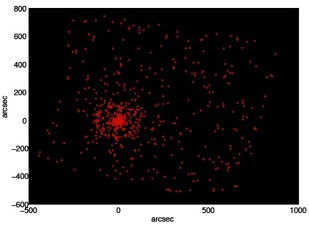SGR giant flares, X-rays echos and dust properties in molecular clouds
Soft Gamma-Repeaters (SGRs) are believed to be neutron stars with super QED magnetic fields (magnetars). SGRs release sporadic flares of soft gamma-rays, which are thought to be energized by their magnetic fields, with intensities that range over many orders of magnitude. In December 2004, SGR 1806-20 released the brightest flare ever observed from an SGR. This giant fare was so energetic, that it seems that the entire magnetar surface field must be annihilated, if it is the flare’s source. The amount of energy released in this flare has several interesting implication both to the physics of the involved processes and to the detectability of similar extra-Galactic flares. But in order to accurately determine the giant flare’s energy, we need a reliable distance measurement to the SGR. In a recent paper we use X-ray echos from a flare that took place at 2006 to constrain the distance to SGR 1806-20. We also used the echos to study the properties of the dust within the intervening molecular clouds. We show that improved X-ray observation of future flares are a powerful method to study dust in the interior of molecular clouds, where it is currently poorly constrained.



An X-ray echo ring around SGR 1806-20 following an intermediate flare



